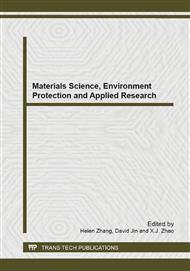p.22
p.26
p.30
p.34
p.38
p.42
p.46
p.51
p.55
The Influences of Process Parameters on Properties of CrNx Coatings Deposited by Closed Field Unbalanced Magnetron Sputtering
Abstract:
CrNx coatings were prepared by closed filed unbalanced magnetron sputtering (CFUMS), and the effects of N2 flux ratio and bias voltage on CrN coatings were investigated. Results showed that the phase in coatings was the coexistence of CrN, Cr2N and Cr, and CrN(111) always showed an intensive preferred orientation in both cases, but CrN(200) enhanced with the rise of bias voltage. The hardness of coatings decreased with an increasing N2 flux ratio, while improved with an increasing bias voltage. The grain edges were polished off and the boundaries became blurred when higher bias voltage was applied. All in all, the surface morphologies of CrN coatings became flatter and denser with both increasing N2 content and bias voltage, respectively.
Info:
Periodical:
Pages:
38-41
Citation:
Online since:
March 2014
Authors:
Keywords:
Price:
Сopyright:
© 2014 Trans Tech Publications Ltd. All Rights Reserved
Share:
Citation:


